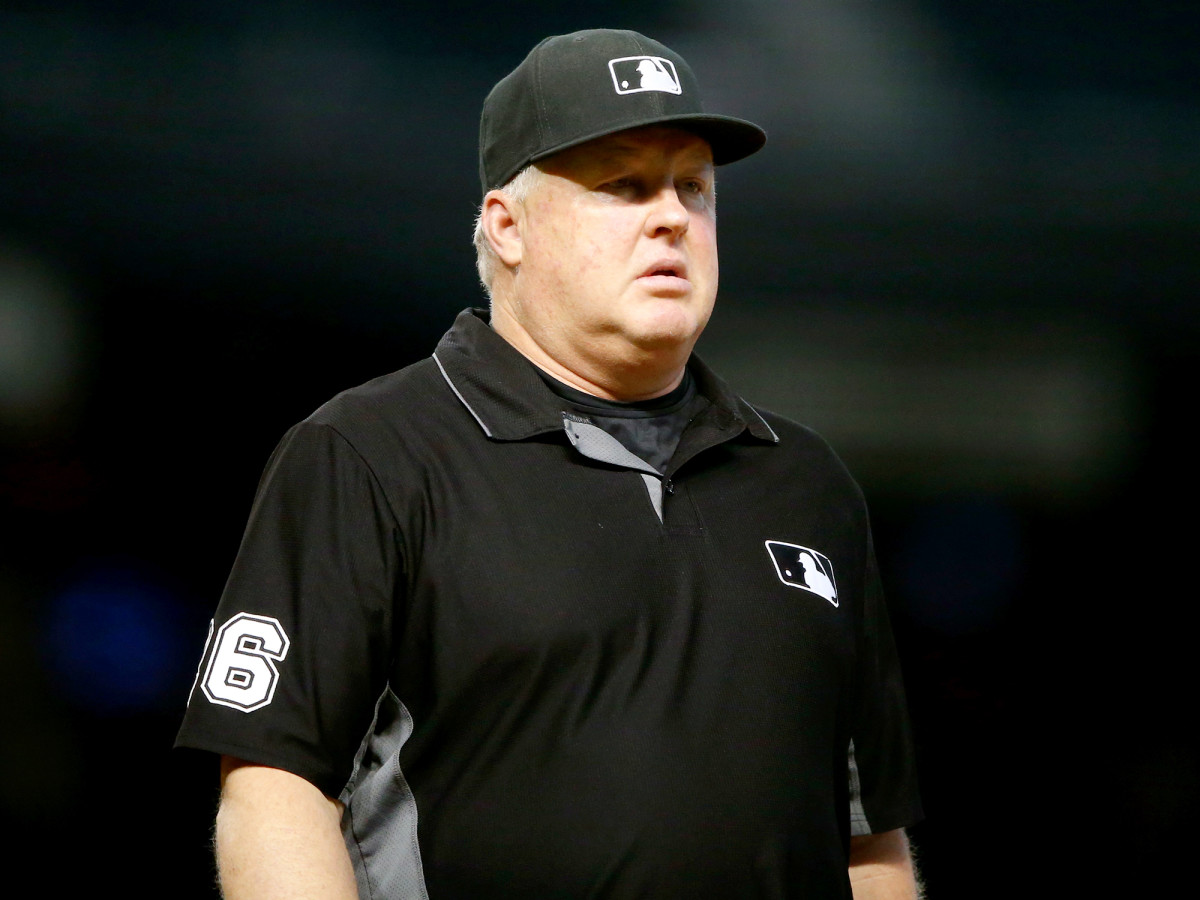Don't Forget About the Umpires As Baseball Grapples With the Coronavirus
As MLB debates how—and whether—to return amid the coronavirus pandemic, everyone wants to know how the people involved feel. Officials and reporters alike ask players and coaches about the “Arizona plan,” the suggestion that the league could quarantine all participants in a sort of biodome in metropolitan Phoenix, shuttling them from hotels to ballparks and back.
Dodgers ace Clayton Kershaw said he was unwilling to spend months away from his family. Rockies third baseman Nolan Arenado said he was open to the idea. Angels manager Joe Maddon said he would play on the moon.
But there are other people who would take the field—and the risks. And no one had asked them.
Bill Miller, the head of the umpires’ union, laughed when asked during a conversation last week. “That’s usually how it goes,” he said. Umpires prefer it that way, he added—they see themselves as an integral part of the sport, but ideally one that fans don’t notice. (“Goat, to us, is not ‘greatest of all time,’” he says.)
Fans might be paying attention to them now. MLB and its umpires agreed on Friday to a deal that may have prevented another roadblock on the path to baseball amid the pandemic. The pact will see the umpires paid on a prorated basis and will give them a seat at the table in the league’s discussions with the players’ union about how and when to begin the season.
Initially, MLB wanted the 76 umpires to take an additional pay cut. Instead the umpires offered to waive their right to various scheduling restrictions, which gives the league more flexibility as it attempts to squeeze as many games as possible into as few days as possible. (They will also work a second spring training, a period during which they are not paid.)
“Umpires sometimes get portrayed as people that have lost touch with reality and that’s not the case at all,” Miller said on Friday. “We wanted more and I’m sure [MLB] wanted more, but we all wanted to do the right thing here. … We’re very grateful we can potentially go back to work.”
Even though they have agreed on salary, the umpires harbor other concerns. The virus can and does kill people of all backgrounds, but it tends to have the strongest effect on older people and people with pre-existing conditions, such as respiratory or cardiovascular disease.
So, people like umpires. They are generally older (they range from 31 to 68) and in poorer health than the players and coaches. In October, longtime ump Eric Cooper died after developing a blood clot at 52, two weeks after working the Yankees–Twins ALDS. Five days later, former umpire Chuck Meriwether died at 63 after a battle with cancer. On Opening Day 1996, 51-year-old ump John McSherry died of a heart attack midway through the first inning. Many are at risk even when in self-isolation.
And you can’t have baseball games without them. Someone has to adjudicate who is out and who is safe, and who swung and who didn’t. Miller scoffed at reports that a socially distanced MLB season would replace home plate umpires—who can’t realistically stand six feet away from the catcher—with an automated strike zone. Neither the league, nor the players’ association has brought that proposal to the umpires, he said. “They don’t even have the technology for that,” he added.

Miller’s constituents are aware of the risks to the Arizona plan, or the home ballparks plan, or really any plan that brings us games before a coronavirus vaccine. Some of them have already expressed concerns, not just about themselves but also about their families. Many older men have older partners, after all. He has been assured that MLB takes his staff’s health just as seriously as that of the players and coaches, so he supports a return to the field when the league’s doctors sign off.
In the meantime, they meet several times a week on Zoom: a rules test on Fridays, a review of the test on Wednesday and then a third meeting for each individual four-man crew. This season was scheduled to be the first in which the crew chief would announce to the crowd that a replay had been initiated, then explain the ruling, so many of the sessions have focused on enunciation and flow. (During spring training, they practiced in empty major league parks in Florida and Arizona.) They also go over and over the rules that will take effect whenever baseball resumes: the new roster limits, the decreased challenge time and especially the various ways teams might try to exploit the three-batter minimum.
The delay to the season hasn’t been all bad. In this way, at least, the break has been a gift: In normal years, the umpires get the text of new rules only after the league and the players’ association has agreed to it, usually near the end of spring training.
“It’s, ‘Take your equipment and have at it,’” Miller said.
And in one way, he noted, the Arizona plan offers an unintended benefit: The spring training ballparks are not set up for the instant-replay system. That means an umpire’s ruling on the field will stand. Managers will be unable to cite the fraction of a second a runner loses contact with the base on his slide as reason to call him out. And teams will have a much harder time stealing signs electronically.
“It’s gonna be old-school baseball,” he said, then chuckled. “Maybe the fans will like that more.”
